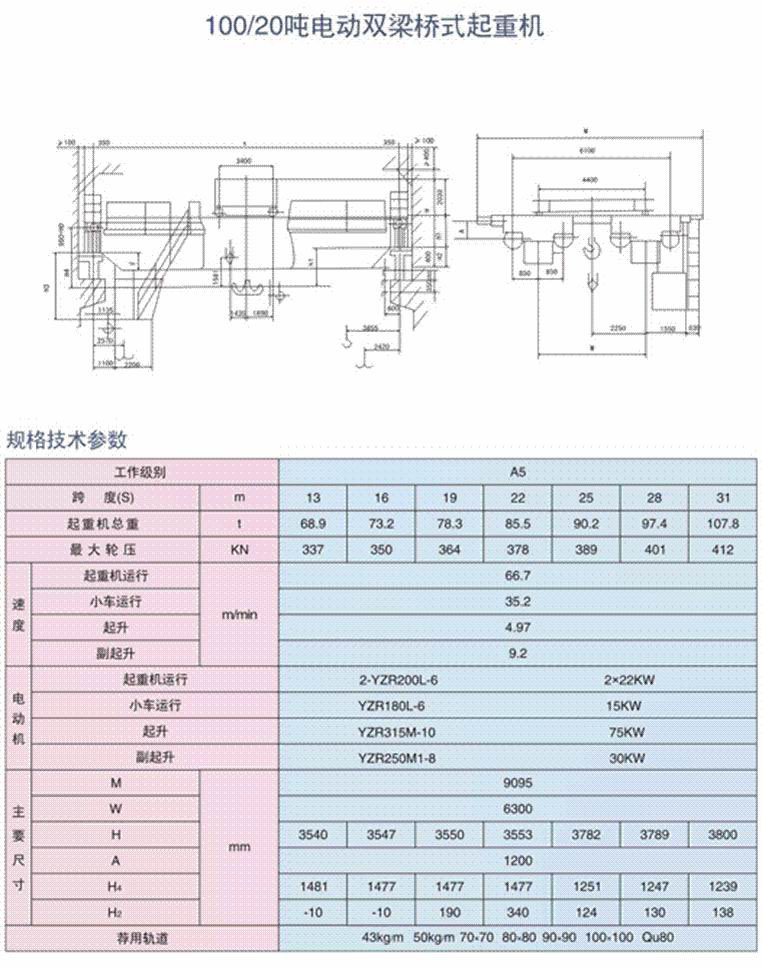The main technical parameters of bridge cranes include lifting weight, span, lifting height, running speed, lifting speed, working type and electrified power continuous rate.
Weight
The lifting weight, also known as the rated lifting weight, refers to the maximum amount of lifting load that the crane actually permits to lift, with t as a unit.
span
The span of the bridge type crane refers to the distance between the central lines of the wheels of the main beam of the crane, that is, the distance between the center lines of the big car's track, and the meter (m) is the unit.
Elevation
The distance between the upper limit position and the lower limit position of hoist or grabbing device (such as grab and electromagnetic sucker) is called the lifting height of the crane, which is based on the meter (m).
running speed
Running speed refers to the speed of the mobile mechanism of a large and small car at the rated speed of the motor at the rated speed, with the meter / score (m/min) as a unit. The running speed of the car is generally 40~60m/min, and the running speed of the big car is 100 to 135m/min.
Speed of lifting
The speed of the motor at the rated speed to increase the weight of the weight, that is, the lifting speed. Generally, the speed of lifting is not more than 30m/min, depending on the property, weight, and lifting requirements of the weight.
Work type
The crane work type determines according to the loading rate and busy degree, can be divided into light, medium, heavy and severe grade four.

Previous: Type Classification Of Gantry Crane
Next: Other Bridge Cranes
Related News
- Common Bridge Crane
- Other Bridge Cranes
- Type Classification Of Gantry Crane
- Classification Of Portal Cranes In Form Of Use
- Gantry Crane Representation Method
- A Historical Record Of A Portal Crane
- Main Features Of Electric Hoist
- Main Equipment Of Electric Hoist
- Classification Of Hoist Crane
- Safety Operation Of Hoist Crane
- Test Procedures Before Use Of Electric Chain Hoist
- India Customer Visited Our Factory

